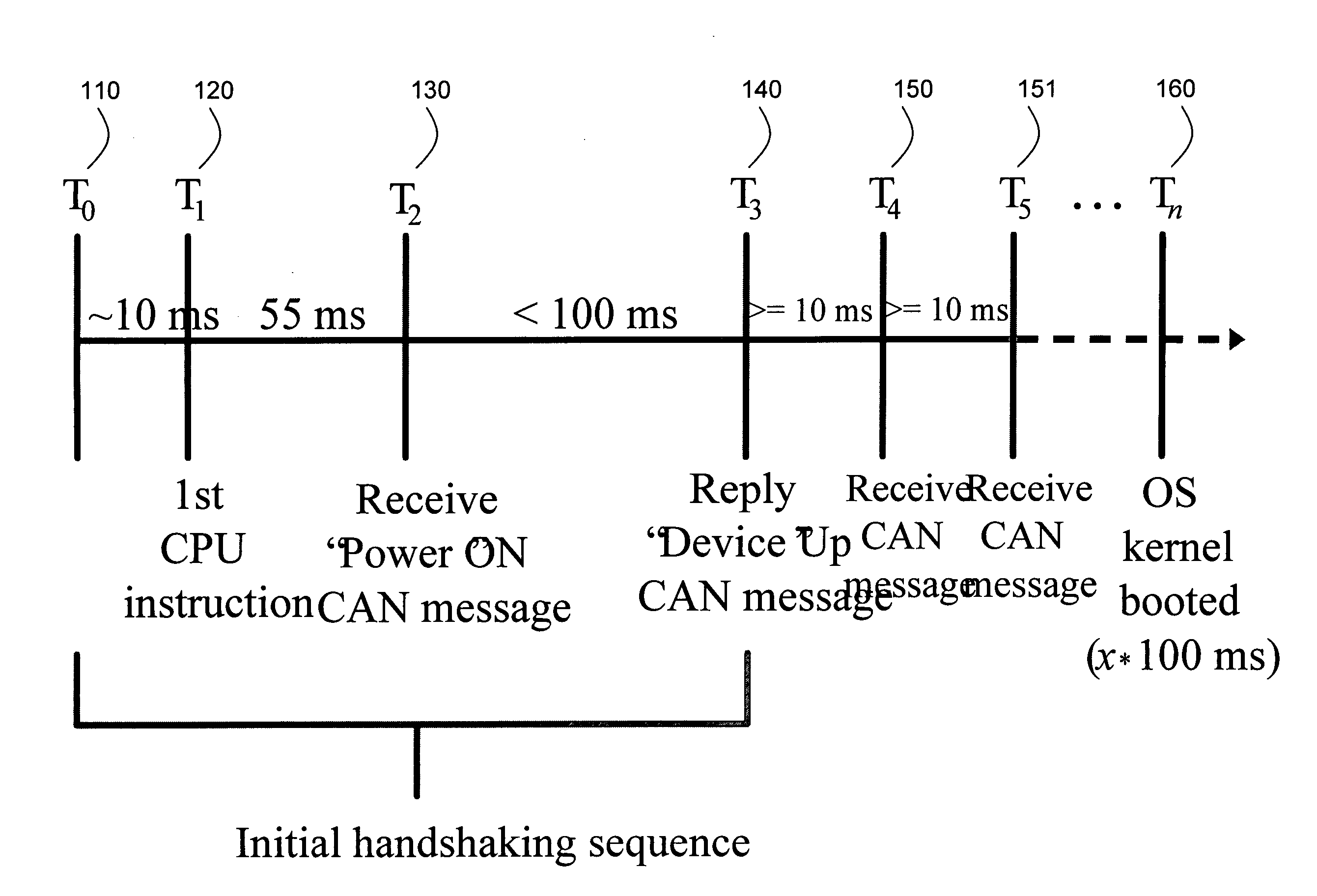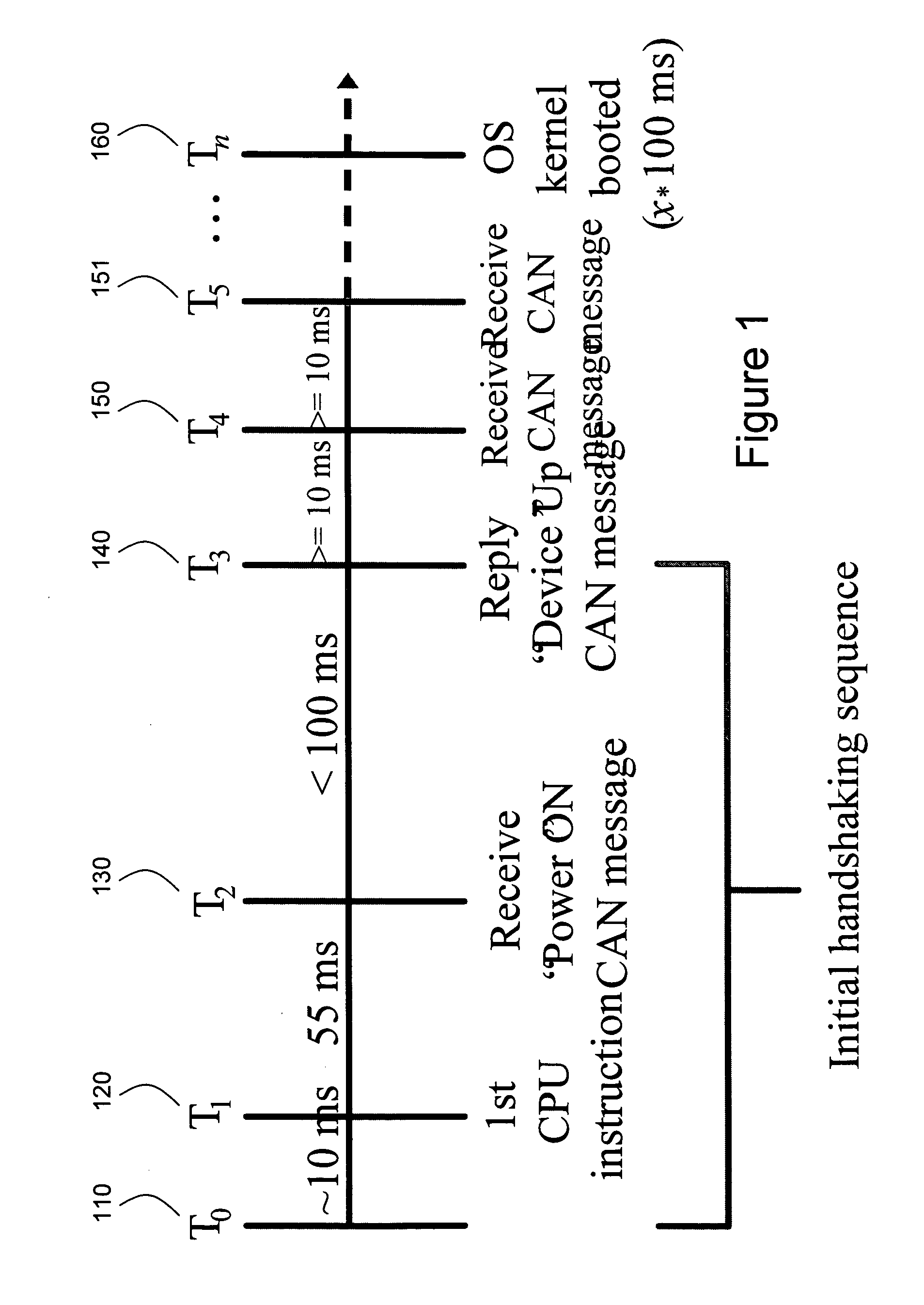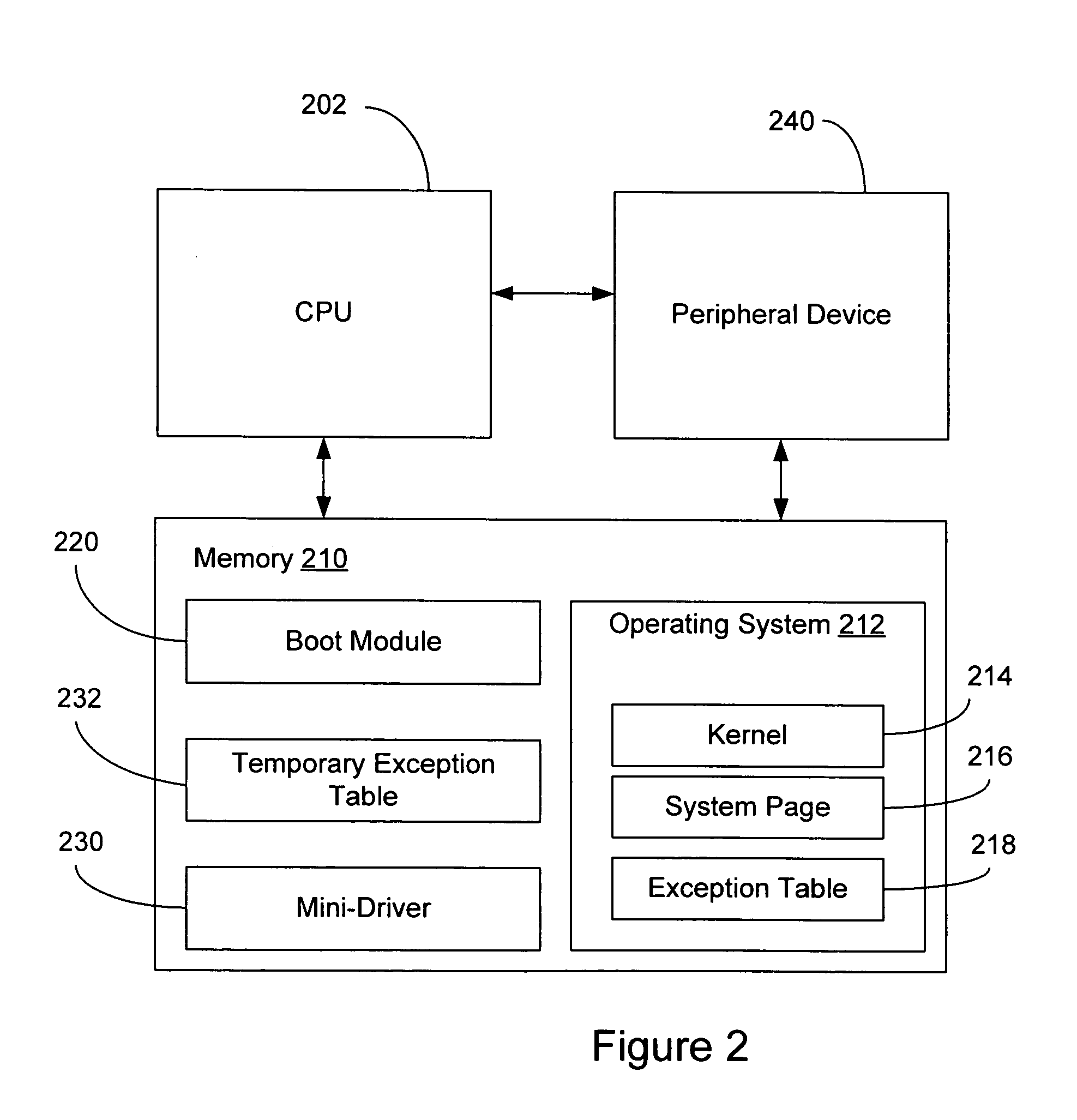System for executing code during operating system initialization
a technology of operating system and operating system initialization, applied in the field can solve the problems of increasing the boot time requirements of real-time operating system (rtos) used in embedded systems, increasing the cost of a price sensitive market, and increasing the likelihood of rtos being fully operational
- Summary
- Abstract
- Description
- Claims
- Application Information
AI Technical Summary
Benefits of technology
Problems solved by technology
Method used
Image
Examples
Embodiment Construction
[0019] Referring now to the drawings and initially to FIG. 1, a diagram of exemplary boot timing sequence for a vehicular system using a CAN bus master device is shown. As illustrated, the CPU may execute it's first instruction 120 about 10 ms after system power on 110. Approximately 55 ms later, or 65 ms after system power on 110, the CAN bus master device may send a “Power Up” message 130 to all devices on the bus. Any device on the bus, such as a telematics system, must respond 140 to this message within 100 ms. After this initial power-on handshaking sequence, additional messages 150a and 150n may be broadcast over the CAN bus at a rate around one message every 10 ms. As described above, these demanding boot time requirements make it questionalble that the RTOS will be fully operational before the first “Power Up” CAN message, as typical OS boot times 160 from power-on-reset (POR) to starting the first user application may be measured in 100's of milliseconds.
[0020] In FIG. 2, ...
PUM
 Login to View More
Login to View More Abstract
Description
Claims
Application Information
 Login to View More
Login to View More - R&D
- Intellectual Property
- Life Sciences
- Materials
- Tech Scout
- Unparalleled Data Quality
- Higher Quality Content
- 60% Fewer Hallucinations
Browse by: Latest US Patents, China's latest patents, Technical Efficacy Thesaurus, Application Domain, Technology Topic, Popular Technical Reports.
© 2025 PatSnap. All rights reserved.Legal|Privacy policy|Modern Slavery Act Transparency Statement|Sitemap|About US| Contact US: help@patsnap.com



